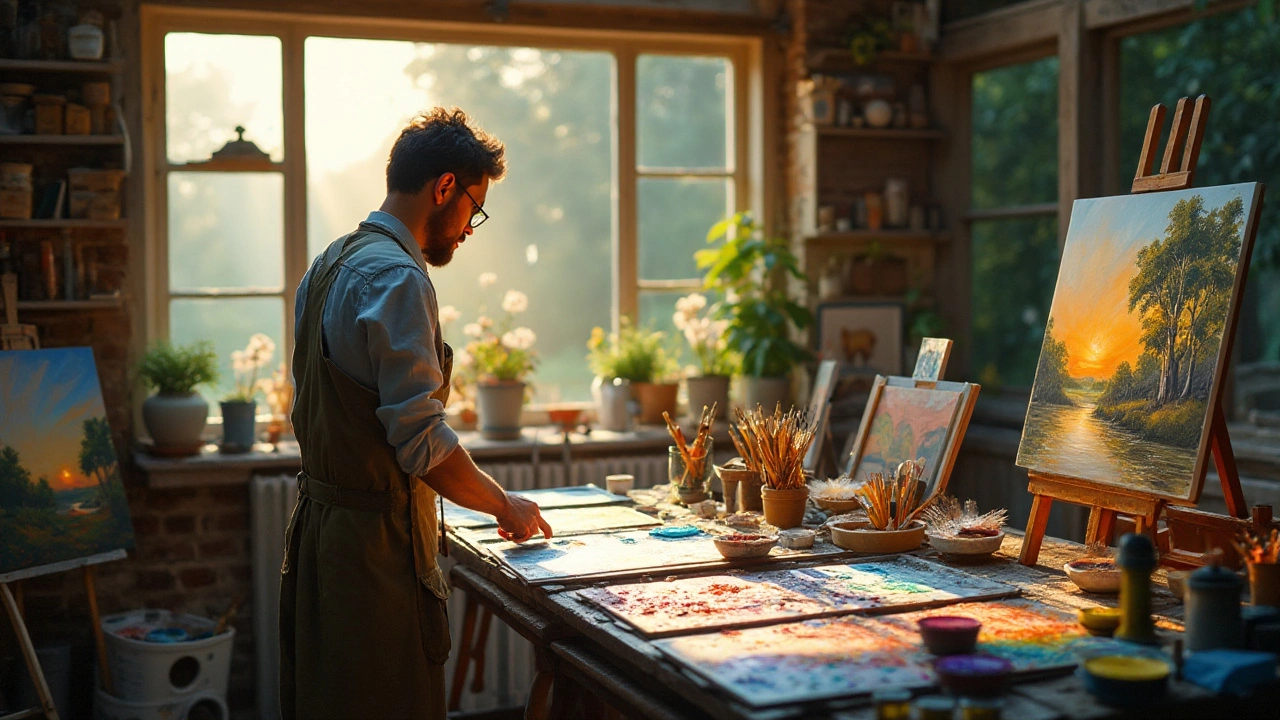Oil Painting Mediums – Choose the Right Additives for Better Paint
If you’ve ever wondered why some oil paintings dry fast and others stay wet for weeks, the answer is the medium you mix in. Mediums are the little helpers that change how oil paint behaves. They can speed up drying, add shine, create texture, or make the paint flow smoother. Knowing which one fits your project saves time and frustration.
Common Mediums and What They Do
Here are the most popular mediums you’ll see in any art supply shop:
Linseed oil – The classic choice. It makes paint richer, adds a glossy finish, and dries slower than most. It’s great for glazing and smooth blending, but it can yellow over time.
Poppy seed oil – A lighter alternative that stays clearer longer. It dries slower than linseed, so it’s good for detailed work where you need a long working time.
Walnut oil – Similar to linseed but less prone to yellowing. Artists love it for portraits because it keeps skin tones natural.
Alkyd medium – A fast‑drying synthetic blend. Mix a little with your paint and it will set in a day or two. Perfect for layers you want to build quickly.
Turpentine or mineral spirits – Solvents that thin paint and clean brushes. They make the paint runny, ideal for underpaintings or lean layers.
Siccatives (drying agents) – Add a few drops to speed up drying. Too much can make the paint crack, so use sparingly.
How to Pick the Right Medium for Your Style
Think about the effect you want. If you enjoy smooth gradients and a shiny surface, blend linseed oil with a bit of varnish medium. For a matte, textured look, try a cold wax medium; it adds body and a chalky finish.
When you’re doing quick studies or want to finish a piece fast, mix a dash of alkyd with your paint. It’ll dry in a day, letting you add subsequent layers sooner.
If you’re painting delicate skin tones, especially in portraits, go for walnut oil. It keeps the colors true and reduces yellowing over years.
Never forget safety: work in a well‑ventilated area when using solvents, and store mediums away from heat.
Experiment is the best teacher. Start with a small amount of each medium on a test canvas. Notice how the paint spreads, how long it stays wet, and how the surface feels once dry. After a few tests you’ll develop a feel for which mix matches your technique.
Finally, remember you don’t have to stick to one medium for an entire painting. Many artists switch between lean (solvent‑heavy) and fat (oil‑heavy) layers to control drying times and avoid cracking. This “fat over lean” rule is a simple way to keep your work stable.
Choosing the right oil painting medium is less about a strict formula and more about understanding what each additive does. With a bit of trial and a clear idea of the look you want, you’ll get smoother blends, faster dries, and finishes that last. Happy painting!

7 Nov 2024
Explore the myriad ways to activate oil paint and bring your artwork to life. Discover the different mediums and tools that affect the texture, drying time, and vibrance of oil paints. Learn practical tips to enhance your painting technique and create stunning masterpieces effortlessly. From understanding traditional methods to experimenting with modern solutions, this article provides a comprehensive guide for artists looking to deepen their practice.
Continue reading...
